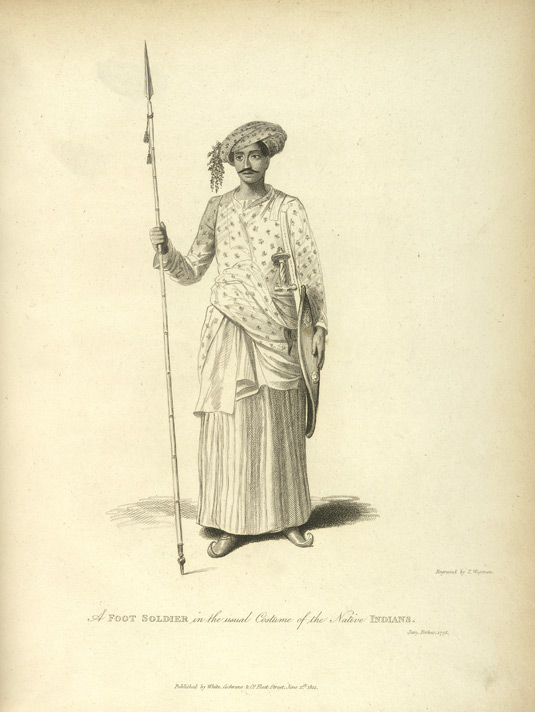Barcha on:
[Wikipedia]
[Google]
[Amazon]
 A barcha, barsha or brchha is a type of
A barcha, barsha or brchha is a type of
 A barcha, barsha or brchha is a type of
A barcha, barsha or brchha is a type of lance
A lance is a spear designed to be used by a mounted warrior or cavalry soldier ( lancer). In ancient and medieval warfare, it evolved into the leading weapon in cavalry charges, and was unsuited for throwing or for repeated thrusting, unlike si ...
with a wooden handle, once common in South Asia
South Asia is the southern subregion of Asia, which is defined in both geographical and ethno-cultural terms. The region consists of the countries of Afghanistan, Bangladesh, Bhutan, India, Maldives, Nepal, Pakistan, and Sri Lanka.;;;;;;;; ...
(the word itself is Hindi
Hindi (Devanāgarī: or , ), or more precisely Modern Standard Hindi (Devanagari: ), is an Indo-Aryan language spoken chiefly in the Hindi Belt region encompassing parts of northern, central, eastern, and western India. Hindi has been de ...
). They were common in the 16th century.
The weapon found itself very handy with the emerging Marathas in early seventeenth century. It was lighter to carry in the mountainous terrain and easier to manufacture. A skilled spearman (bhalaeet) could keep a heavily armed foot soldier at bay. With his slashing and thrusting motions, he could inflict much damage while surrounded by a number of swordsmen. The illustrious use of this weapon is recorded in the last stages of third battle of Panipat by the Maratha general Sadashivrao Bhau.(''See : Third Battle of Panipat'') . Another version of this weapon is the actual Ballam, a throwing spear effectively used to bring down infantry and cavalrymen at a distance.
The barcha is also considered a magical weapon used in a shaman's education. Along with ''purbe'', a wooden ritual knife, and ''thudung'', a drum, the lance was taught to the guru's student through participation in rituals. Variations of the barcha include the snake-like Nagini Barcha and the hand-shaped Karpa Barcha. Nagini Barcha was identified as the weapon used by the Sikh
Sikhs ( or ; pa, ਸਿੱਖ, ' ) are people who adhere to Sikhism, Sikhism (Sikhi), a Monotheism, monotheistic religion that originated in the late 15th century in the Punjab region of the Indian subcontinent, based on the revelation of Gu ...
warrior Bachittar Singh
Bhai Bachittar Singh (6 May 1664 – 22 December 1705), often known with the honorific "Shaheed" (martyr), was a Sikh hero and a general of Guru Gobind Singh. His father was Bhai Mani Singh and he came from Alipur Riyasat Multan.
Family ba ...
during the siege of Lohgarh
Lohgarh is a village in Notified Area Committee of Zirakpur in district Mohali in state of Punjab in India. This is not to be confused with another namesake Lohgarh (Bilaspur) in Haryana which was capital of first Sikh state under Banda Singh B ...
.
See also
*Bagh nakh
The bagh nakh, vagh nakh, or vagh nakhya ( mr, वाघनख / वाघनख्या, bn, বাঘনখ, hi, बाघ नख, ur, باگھ نکھ, lit. tiger claw) is a "fist-load, claw-like" dagger, originating from the Indian subcontin ...
* Chakram
Chakram ( sa, , script=latn; pa, , script=latn) is a throwing weapon from the Indian subcontinent. One of its major purposes is to protect the turban and the head from sword/melee attacks. It is circular with a sharpened outer edge and a diamet ...
* Katar
* Trishula
The ''trishula'' () is a trident, a divine symbol, commonly used as one of the principal symbols in Hinduism.
In Nepal and Thailand, the term also often refers to a short-handled weapon which may be mounted on a ''daṇḍa'' " staff". Unlik ...
References
Bibliography
*Balfour, Edward (1885). ''The Cyclopædia of India and of Eastern and Southern Asia''. London: Bernard Quaritch. *Mayaram, Shail (2003). ''Against History, Against State: Counterperspectives from the Margins''. New York: Columbia University Press. Polearms {{India-hist-stub